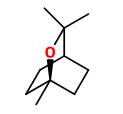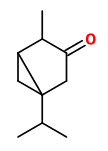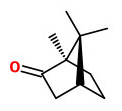Salvia fruticosa Mill. - syn.Salvia triloba L. - Lamiaceae - Greek sage, three-lobed sage, Griechischer Salbei, Dreilappiger Salbei
Perennial herb or little shrub, up to 60cm high, native to Southeast Europe (Greece, Italy, Albania), and Western Asia; leaves lanceolate, grayish green with a silvery hairy covering; flower pale violet.
„Due its wide variation in leaf shape, there has been a great deal of taxonomic confusion over the years, with many of the leaf variations of Salvia fruticosa being named as distinct species. These include S. libanotica, S. triloba, S. lobryana, and S. cypria, which are now considered to be Salvia fruticosa.“ wikipedia
S.fruticosa is used in the Mediterranean region mainly for tea and as a spice in meat and poultry dishes, on the world market as substitute or additive to Salvia officinalis and for oil production.
[The essential oil and yield components from various plant parts of Salvia fruticosa., Putievsky, E., Ravid, U., Dudai, N., Journal of Natural Products, 49(6), 1986, 1015-1017]
Compared to of the essential oil composition of S.officinalis, the relative contents of α-thujone, β-thujone and camphor was between 45 and 68% in S.officinalis and between 4.8 and 15.9% in S. fruticosa. The amount of 1,8-cineole varied between 2.8-23% in S.officinalis and 55-75% in S.fruticosa.
[Composition of the essential oils of commercial samples of Salvia officinalis L. and S. fruticosa Miller: a comparison of oils obtained by extraction and steam distillation., Länger, R., Mechtler, C., Jurenitsch, J., Phytochemical Analysis, 7(6), 1996, 289-293]
„Forty-eight individual clones collected from the wild were analysed for the quality and quantity of their essential oils… All plants examined were very rich in essential oil ranging from 2.5 to 7.0% ml/g d.w. All essential oils were characterised by high 1,8-cineole content (30-58%), variable α- and β-thujone (1.4-30%) and camphor (0.6-20.4%) content.“
[Evaluation of the genetic diversity of Salvia fruticosa Mill. clones using RAPD markers and comparison with the essential oil profiles., Skoula, M., El Hilali, I., Makris, A.M., Biochemical systematics and Ecology, 27(6), 1999, 559-568]
„It is noteworthy that the total essential oil content of the wild plants is similar to that found by the headspace analysis of the cultivated clones… The major volatiles found were: 1,8-cineole (48.0-59.2%), β-myrcene (3.6-7.8%), α-pinene (9.2-10.0%), β-pinene (10-11%), camphene (2.5-10.1%), α-thujone (0.6-1.5%), β-thujone (0.4-4.4%) and camphor (1.2-5.9%). Together these represent over 90% of the total volatile content. The remaining compounds were each in very small amounts (less than 1%). There was significant variation between populations in respect of the essential oil composition.“
[Genetic variation of volatiles and rosmarinic acid in populations of Salvia fruticosa mill growing in Crete., Skoula, M., Abbes, J.E., Johnson, C.B., Biochemical systematics and ecology, 28(6), 2000, 551-561]
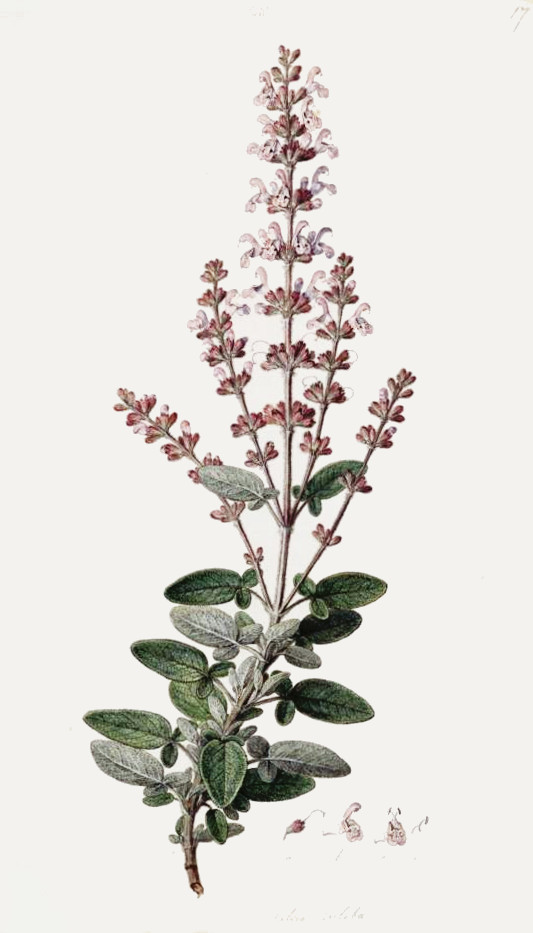
Sibthrop,J., Smith,J.E., Flora Graeca, vol.1, t.17 (1806) plantgenera.org
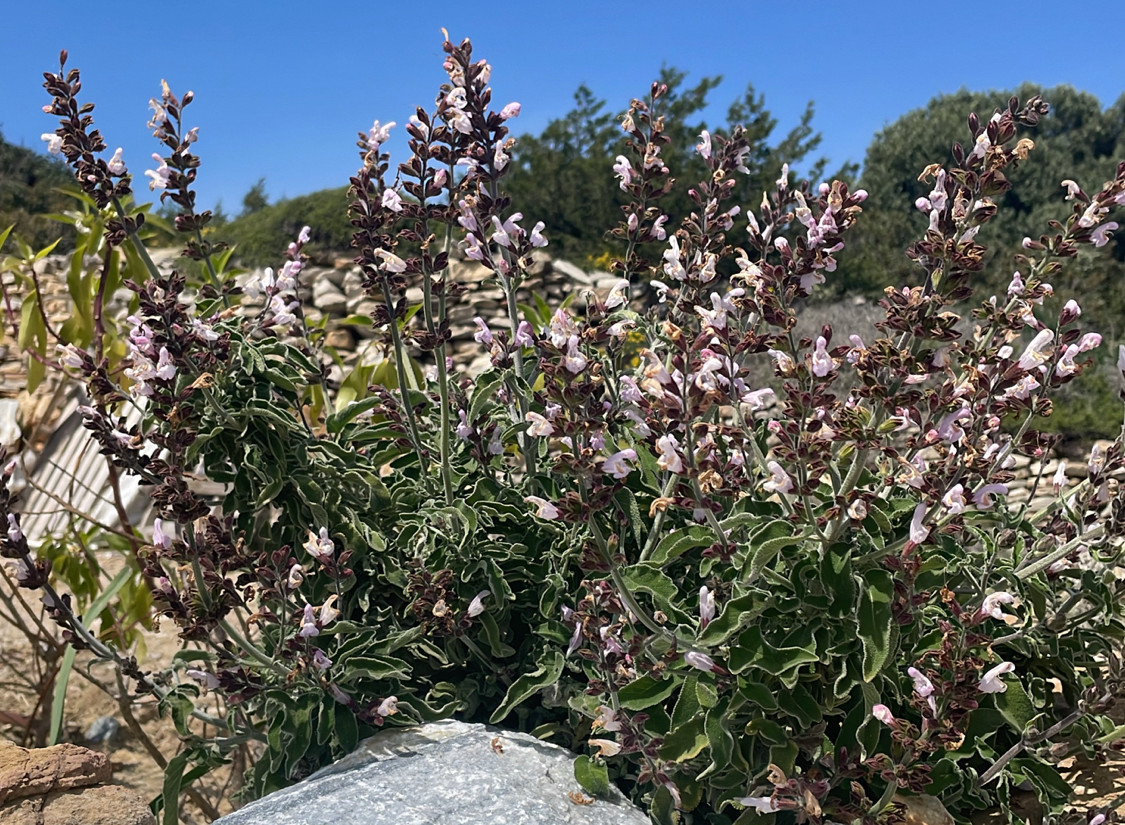
Salvia fruticosa, Lefka, South Aegean, Greece (2025) © Elena Symeonidou CC BY-SA 4.0 inaturalist.org
